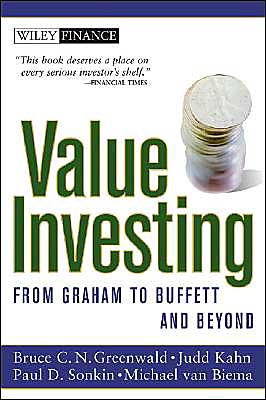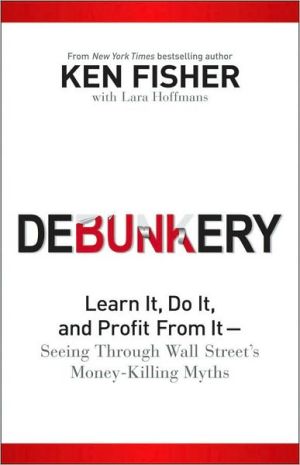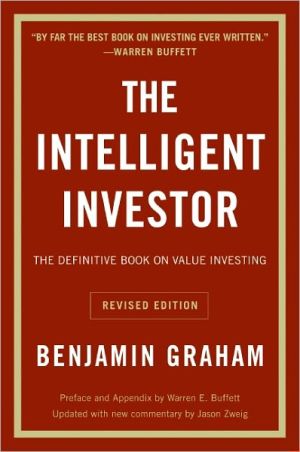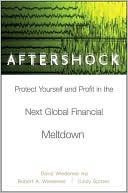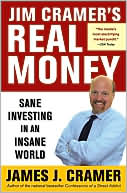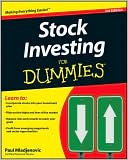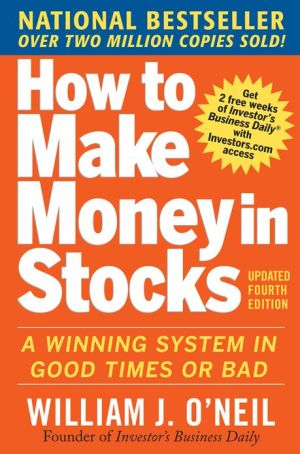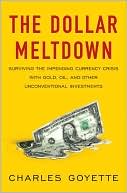Value Investing: From Graham to Buffett and Beyond
From the "guru to Wall Street's gurus" comes the fundamental techniques of value investing and their applications\ Bruce Greenwald is one of the leading authorities on value investing. Some of the savviest people on Wall Street have taken his Columbia Business School executive education course on the subject. Now this dynamic and popular teacher, with some colleagues, reveals the fundamental principles of value investing, the one investment technique that has proven itself consistently over...
Search in google:
From the "guru to Wall Street's gurus" comes the fundamental techniques of value investing and their applications Bruce Greenwald is one of the leading authorities on value investing. Some of the savviest people on Wall Street have taken his Columbia Business School executive education course on the subject. Now this dynamic and popular teacher, with some colleagues, reveals the fundamental principles of value investing, the one investment technique that has proven itself consistently over time. After covering general techniques of value investing, the book proceeds to illustrate their applications through profiles of Warren Buffett, Michael Price, Mario Gabellio, and other successful value investors. A number of case studies highlight the techniques in practice. Bruce C. N. Greenwald (New York, NY) is the Robert Heilbrunn Professor of Finance and Asset Management at Columbia University. Judd Kahn, PhD (New York, NY), is a member of Morningside Value Investors. Paul D. Sonkin (New York, NY) is the investment manager of the Hummingbird Value Fund. Michael van Biema (New York, NY) is an Assistant Professor at the Graduate School of Business, Columbia University. San Jose Mercury News - David A. Sylvester No one can doubt there's an urgent need to think clearly about investing, since many investors in Silicon Valley companies have suffered a stock market decline comparable to the Crash of '29. The burned investor could find no better starting place than this superb book by four New York City value investors, all descended from the master of value investing, Benjamin Graham.... They have written one of the most intelligent overviews of investing I've ever read, combining analytical rigor with intuitive description.
\ Chapter 1\ Value Investing\ Definitions, Distinctions, Results, Risks, and Principles
Preface to the Paperback EditionixPreface to the First EditionxvPart IAn Introduction to Value Investing1Value Investing: Definitions, Distinctions, Results, Risks, and Principles32Searching for Value: Fish Where the Fish Are17Part IIThree Sources of Value3Valuation in Principle, Valuation in Practice31AppendixThe Present Value of Future Cash Flows484Valuing the Assets: From Book Value to Reproduction Costs515Earnings Power Value: Assets Plus Franchise71AppendixThe Value of Brands--Less than Meets the Eye?866A Wonderful Little Franchise: The Earnings Power of WD-40897Inside Intel: The Value of Growth within the Franchise107AppendixValuation Algebra: Return on Capital, Cost of Capital, and Growth1388Constructing the Portfolio: Risk, Diversification, and Default Strategies147Part IIIValue Investing in Practice: Profiles of Eight Value Investors9Warren Buffett: Investing Is Allocating Capital16110Mario Gabelli: Discovering and Unlocking the Private Market Value19711Glenn Greenberg: Investigate, Concentrate, and--Watch That Basket21112Robert H. Heilbrunn: Investing in Investors22513Seth Klarman: Distressed Sellers, Absent Buyers23114Michael Price: Discipline, Patience, Focus, and Power24515Walter and Edwin Schloss: Keep It Simple, and Cheap26316Paul D. Sonkin: Small Is Beautiful, Especially When It's Ugly277References293Acknowledgments296Index297
\ Robert BarkerIndividual investors in the Internet Age are blessed with information. We also are cursed with too much of the stuff, from real-time quotes to streaming videos of fund managers. This info-clutter extends to books, and cutting through it can be difficult, even dispiriting, when you see how little thought goes into so many books. That's why I've spent part of the summer doing it for you. And the new title most deserving of your time is Value Investing: From Graham to Buffett and Beyond. Its authors, Columbia Business School faculty members Bruce C.N. Greenwald and Michael Van Biema and fund managers Paul D. Sonkin and Judd Kahn, aim to place their work next to Benjamin Graham's 1950 classic, The Intelligent Investor. My 1986 edition came with Warren Buffett's endorsement—"by far the best book on investing ever written." Value Investing is better. \ —BusinessWeek\ \ \ \ \ David A. SylvesterNo one can doubt there's an urgent need to think clearly about investing, since many investors in Silicon Valley companies have suffered a stock market decline comparable to the Crash of '29. The burned investor could find no better starting place than this superb book by four New York City value investors, all descended from the master of value investing, Benjamin Graham.... They have written one of the most intelligent overviews of investing I've ever read, combining analytical rigor with intuitive description. \ —San Jose Mercury News\ \ \ Paul SturmGreenwald is a conventional economist (Ph.D. from MIT who caught the value bug. He has updated and expanded Graham's ideas, and his summer seminars ($2,900 for two days have become popular with everyone from well-known money managers to Columbia MBAs who couldn't get into Greenwald's class. But now there is a cheaper way to learn from Greenwald: He and three colleagues have just published "Value Investing: From Graham to Buffett and Beyond." Greenwald probably won't outsell Graham, but I think he ought to. \ —SmartMoney Magazine\ \ \ \ \ BooknewsLeading authorities on value investing reveal principles that have made value investing one of the most consistently profitable investment techniques. They explore the history of value investing, explain its underlying principles, and offer guidelines for its successful application. They tell where to look for underpriced securities and how to determine the intrinsic value of a stock, and describe alternative methods for constructing a portfolio that controls risk without restricting investment returns. They detail techniques of the most successful value investors of the 20th century, and show how to adapt techniques to new investment climates. Annotation c. Book News, Inc., Portland, OR (booknews.com)\ \
